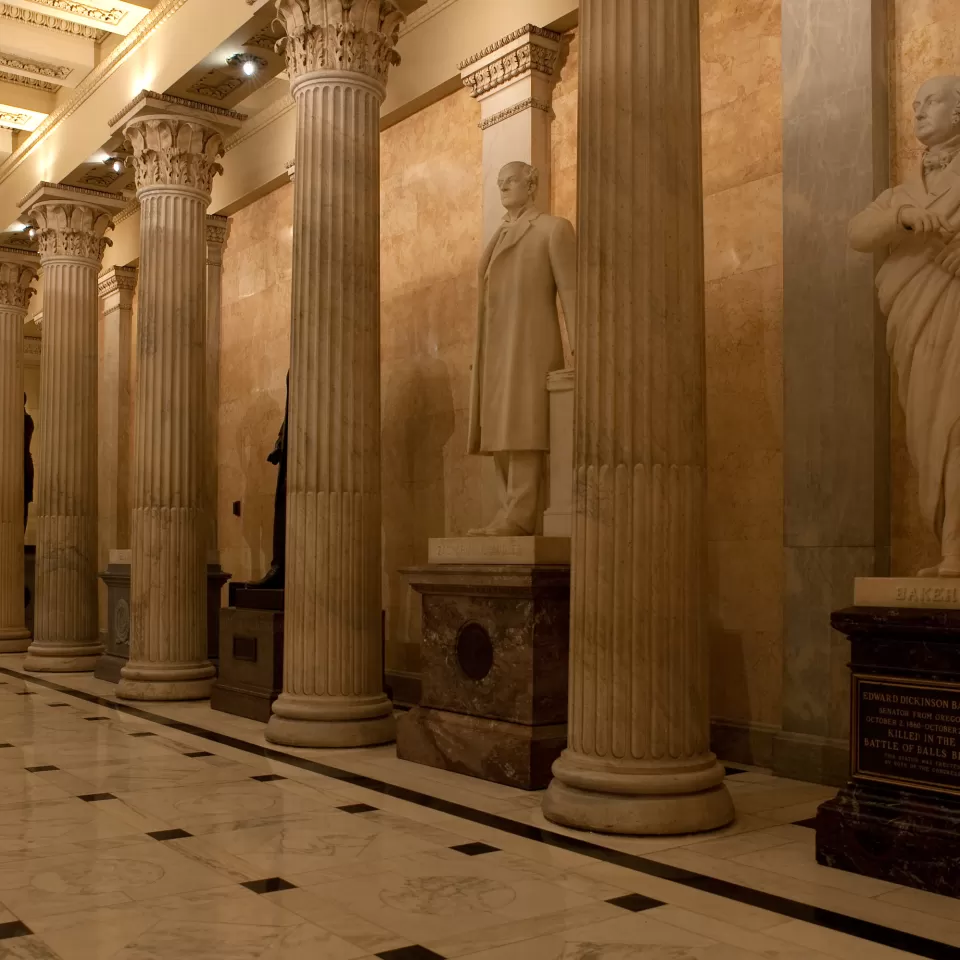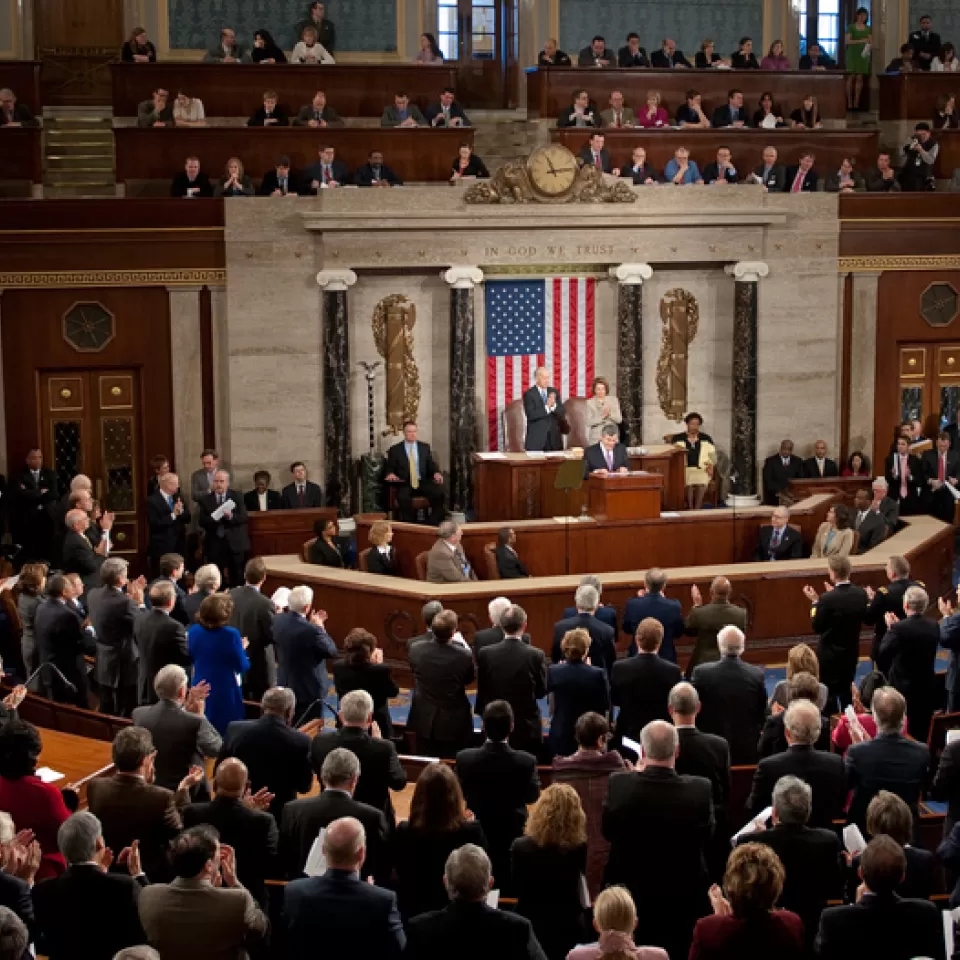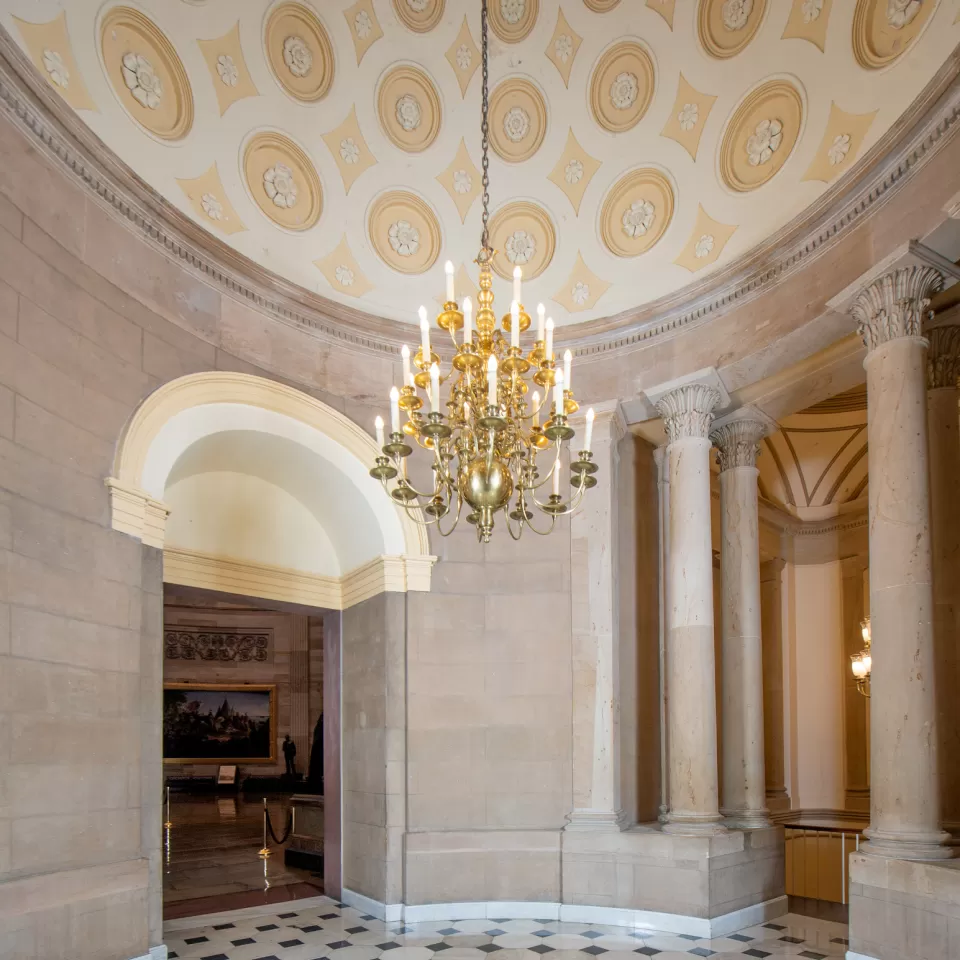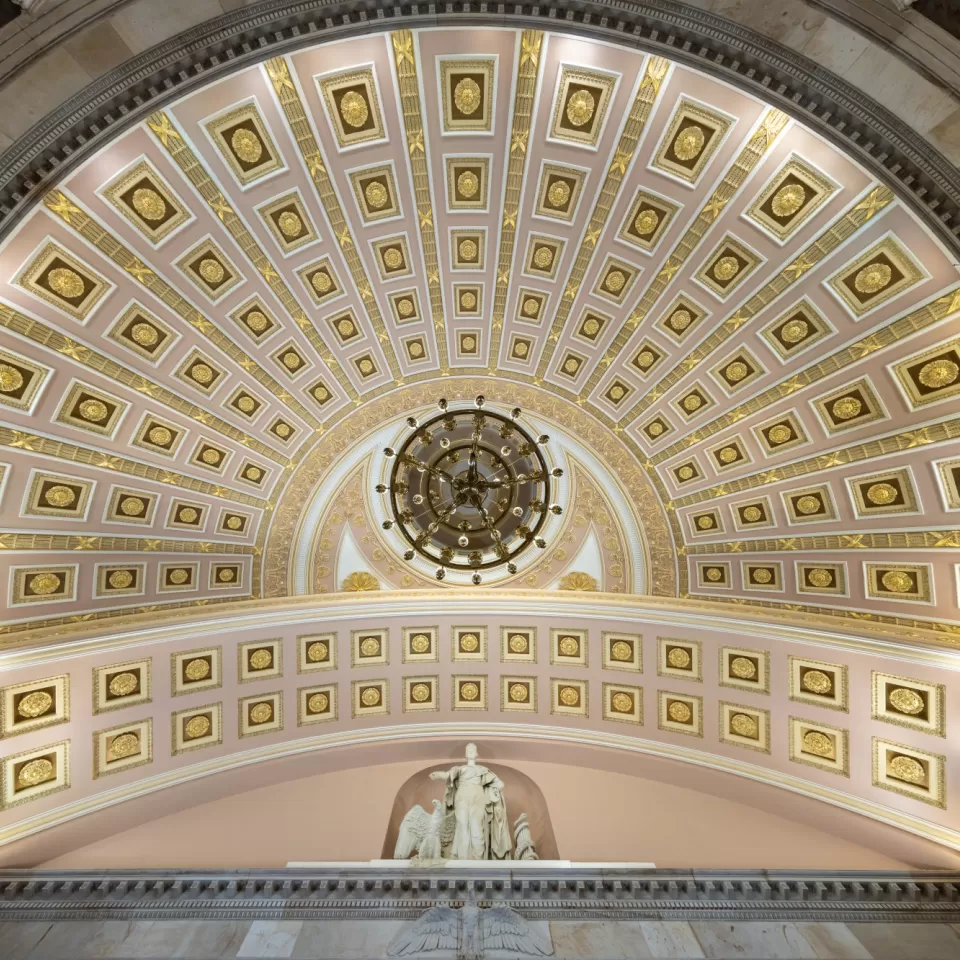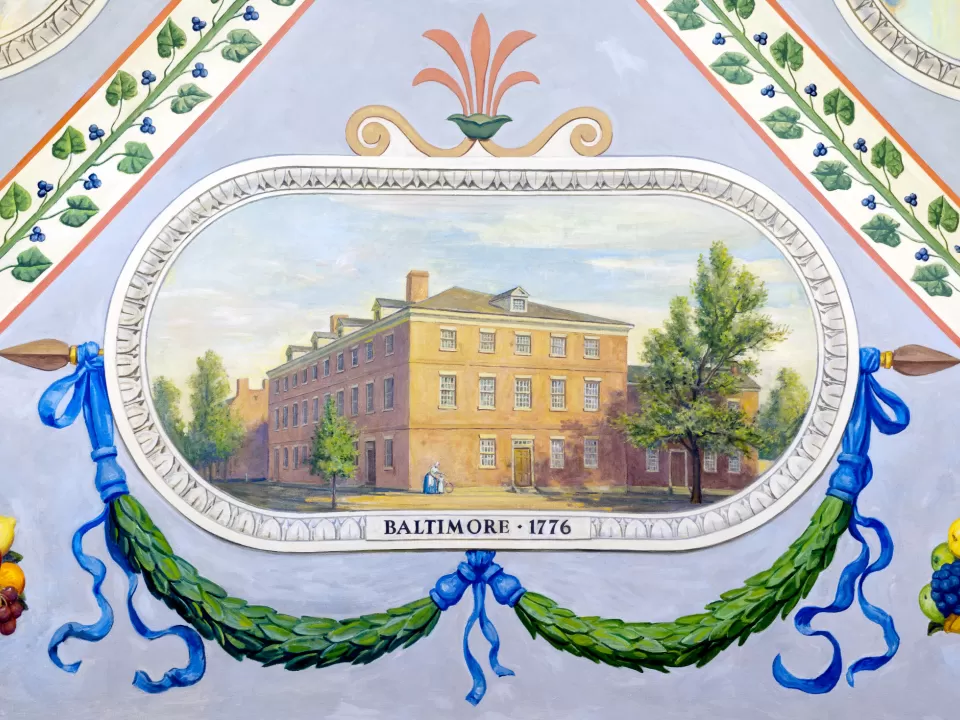
Highlight
Baltimore, 1776
The Congress moved to Baltimore, Maryland, a safer haven during the war than Philadelphia, after the Declaration of Independence. It met in this rented building, since known as Old Congress House; the building was destroyed by fire in 1860.
House Wing
